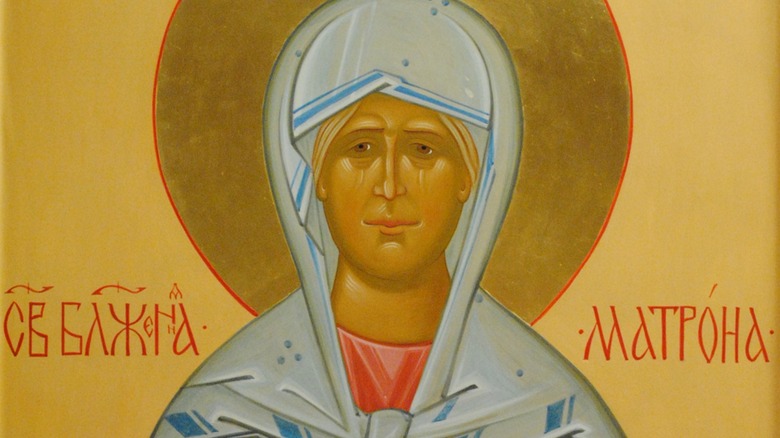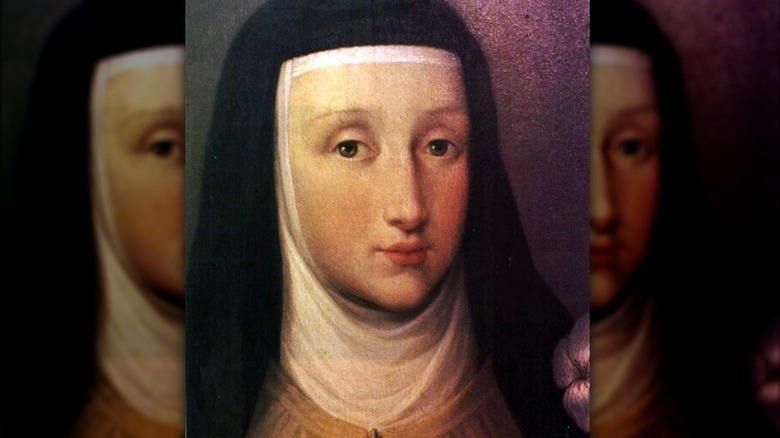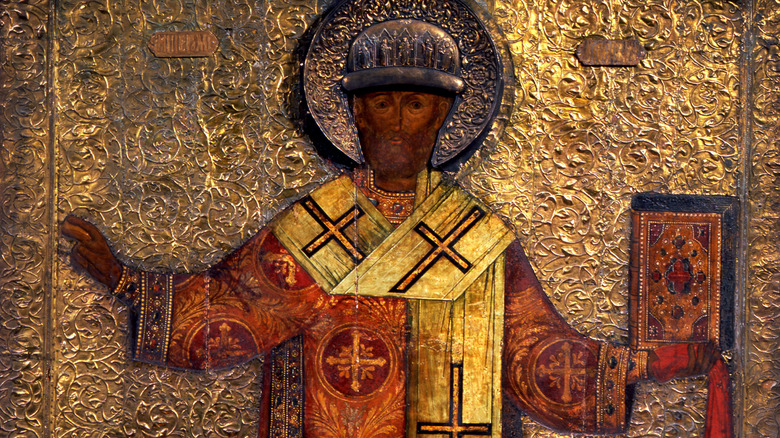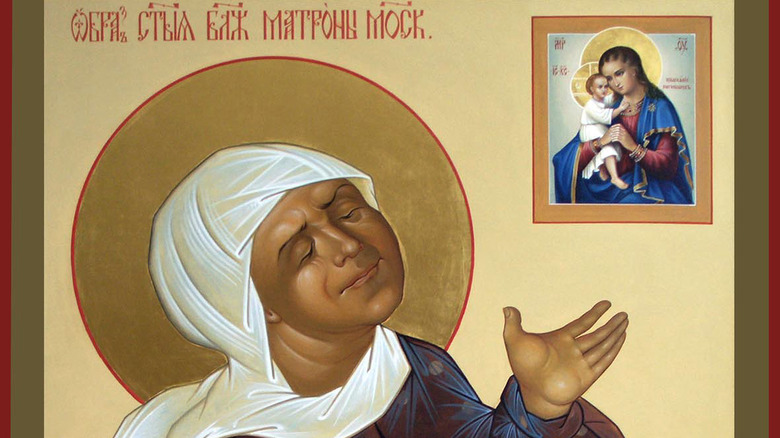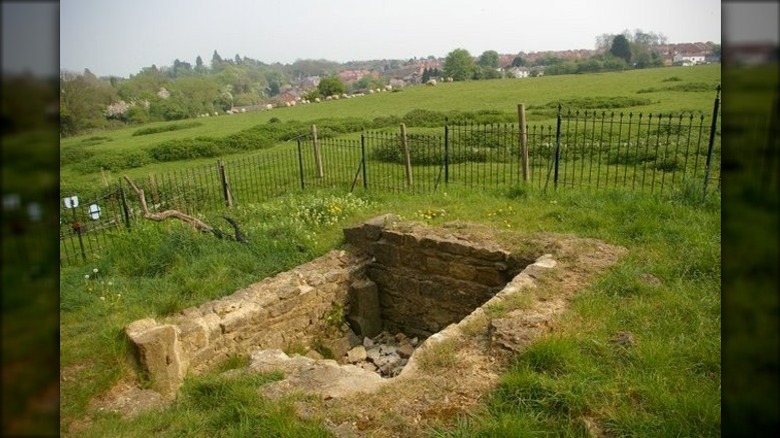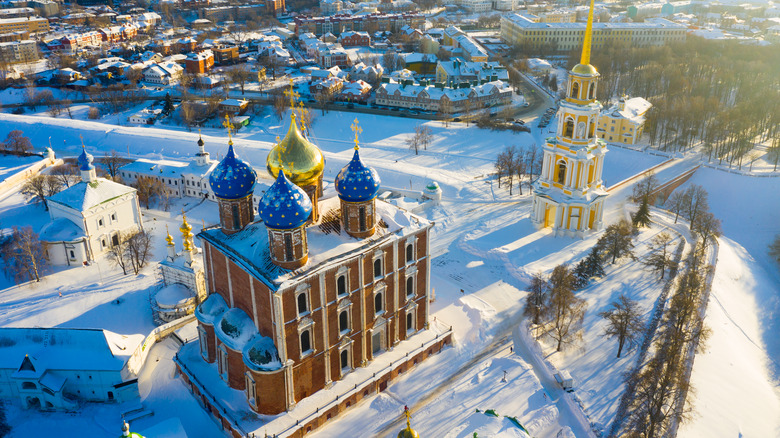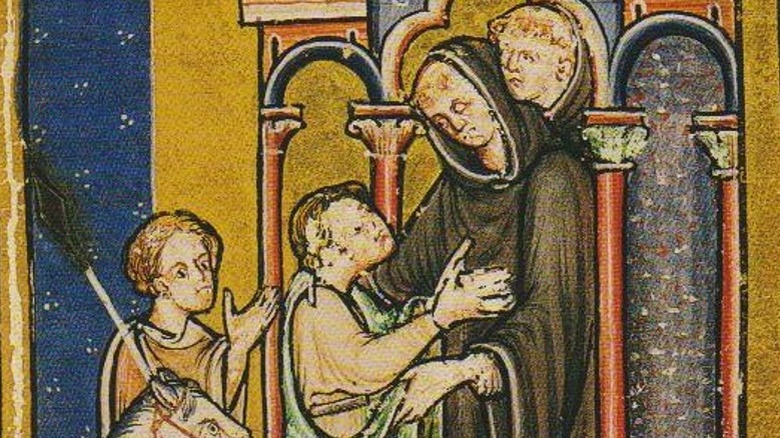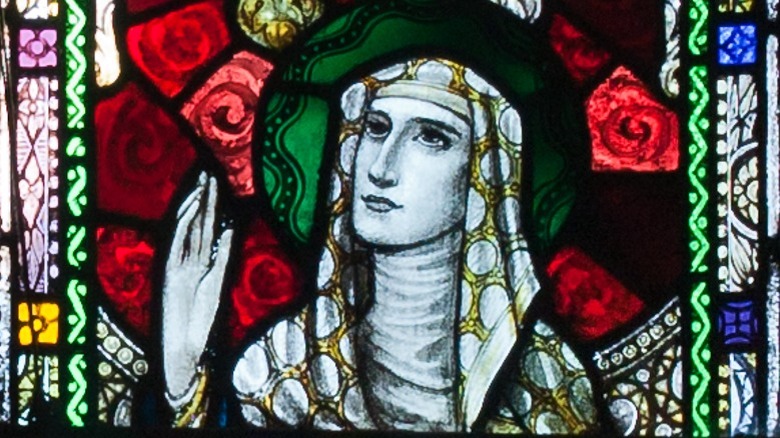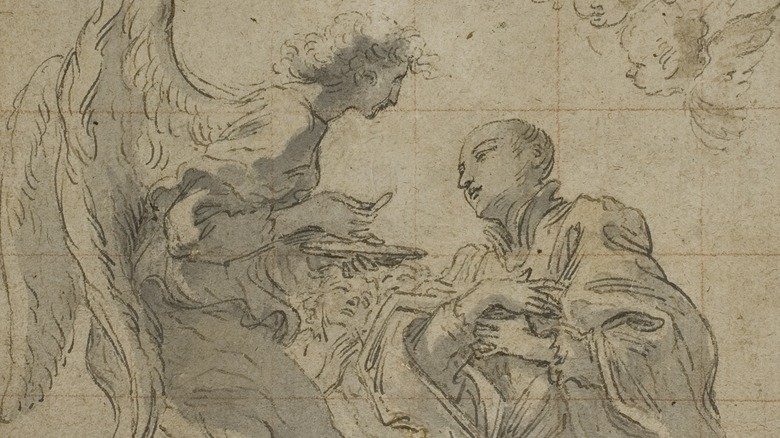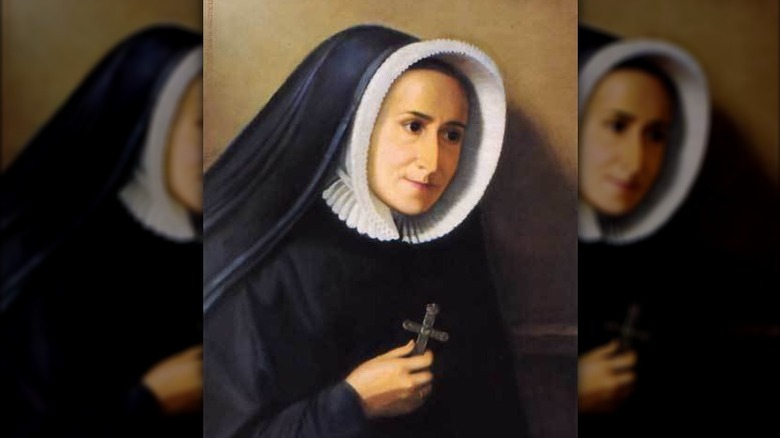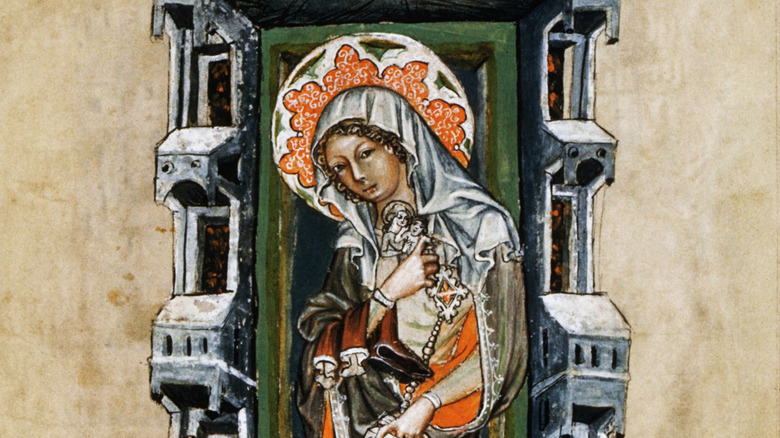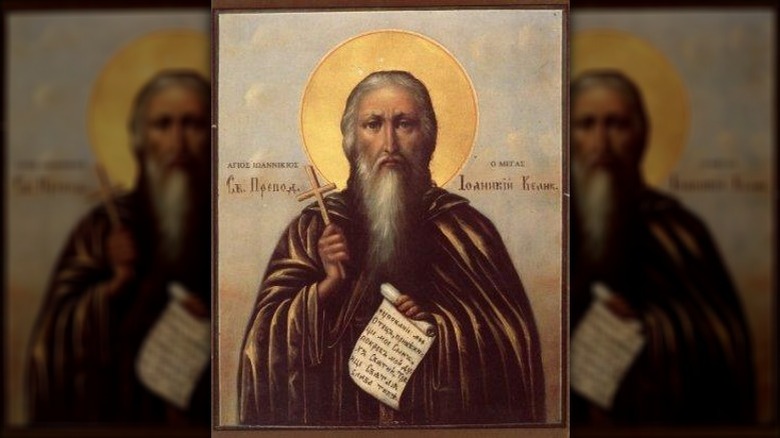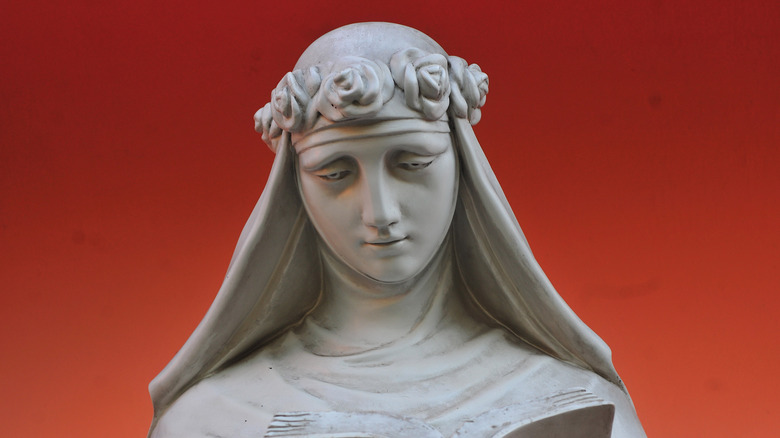Saints Who Predicted Their Own Deaths
Many saints were said to have psychic powers, and they used these abilities to help others, thus leading to their saintly reputations even while alive. But it wasn't always just other people they made predictions for; in some cases, these saints used their gifts of foresight to see their own deaths. Other times, saints without any seemingly supernatural abilities would have a vision towards the end, telling them their death was about to happen. Sometimes these visions or predictions were as detailed as the exact time and place the death would occur.
Many of these saints were very old, especially for the times they were living in, so those around them must not have been too impressed with their ability to realize they were dying. Other tales record that no one believed the future saints when they said their death was coming, either because they were still young or seemed perfectly healthy. Regardless, those saints, at least according to the stories and legends about their lives, really did accurately predict their own deaths.
St. Teresa Margaret Redi
St. Teresa Margaret of the Sacred Heart was born to a well-off Italian family in 1747. After experiencing an unexplained spiritual experience while at school, during which she believed she was called to become a Carmelite nun, St. Teresa Margaret joined a nunnery as soon as she turned 18.
However, she was not long for the world and, apparently, she knew it. There were several signs she knew her death was coming soon in the years before. When nursing an elderly nun who was dying, St. Teresa Margaret made the woman promise that she would ask God to "permit Sister Teresa Margaret to join her quickly in order that she may love Him without hindrance for all eternity," as recorded in "God is Love: Saint Teresa Margaret: Her Life," by Margaret Rowe. Others remembered her talking about the short time she had left, or even her desire to die quickly. When one old friend came to visit her, the future saint agreed they could have another meeting, but only "If you can see me."
Only months after her patient died in 1770, St. Teresa Margaret did as well, aged 23. She was canonized in 1934.
St. Philip, Metropolitan of Moscow
If you are going to anger an absolute ruler, it's probably best to avoid ones nicknamed "the Terrible." But St. Philip found himself in this position when Czar Ivan IV of Russia made him leave his monastery and become the Metropolitan of Moscow in 1567. (In the Russian Orthodox Church, a metropolitan is similar to a Catholic or Protestant archbishop.)
But, according to the Holy Protection Russian Orthodox Church, St. Philip couldn't ignore the violence and murders that the czar allowed under his reign and called the ruler out on it in public, saying, "I lament not of the innocent murdered as martyrs and saints; it is your soul that I mourn over. Although a monarch blessed from above, you are still a mortal one, and you will have to account for all of your deeds before the Lord."
Ivan had St. Philip defrocked and removed from his post. Predicting your death when a bloodthirsty czar is furious with you might not seem impressive, but Ivan had promised not to burn St. Philip to death and agreed to life imprisonment. Yet, three days before he was murdered, St. Philip predicted the event was about to happen. When his assassin pretended to be calling on him about something else, the future saint said, "Do not blaspheme, fulfill the purpose of your visit." He was then strangled to death. He was made a saint in 1636.
St. Matrona of Moscow
St. Matrona the Blind of Moscow was, as her name suggests, born without her sight in either 1881 or 1885. Then she became paralyzed when she was only 17.
However, St. Matrona had other abilities that were much more impressive. It was said that not only could she see the future from a young age, but by the time she was 7 she could miraculously heal the sick. During World War II, families would ask her if their son or father had died at the front, which she would allegedly know. However, after the Russian Revolution in 1917, being openly religious was dangerous — although St. Matrona never became a nun or entered a convent, she was clear her powers came from God. This meant she was constantly in danger of being arrested. One story, via the American Carpatho-Russian Orthodox Diocese of North America, says that when an official finally came to her house, she told him to go home and save his wife first. He listened, found his wife badly injured, and got her medical attention just in time; after that, he refused to arrest St. Matrona.
St. Matrona predicted her own death three days beforehand, enough time to give detailed instructions for her funeral. She was canonized in 1999.
St. Rumwold of Buckingham
The fact that St. Rumwold (also spelled Rumbold) of Buckingham predicted his own death is perhaps less surprising than the fact he said anything at all. You see, Rumwold was born to a king of Northumbria in 662 — and only survived for three days.
This infant proved his unbelievable precociousness as soon as he was born, so the story goes. Not only did he announce he was a Christian and demand to be baptized, but the infant even gave a sermon on the famously complex subject of the Holy Trinity. He also predicted his death and explained in detail how he was to be buried in various different places before finally getting to rest in peace in one final spot.
It's probably not surprising that the existence of St. Rumwold is questioned. Even the 17th-century minister and academic Thomas Fuller was frustrated with how hard any of the saint's story is to prove, especially considering it is only found in one source written around 400 years after Rumwold would have lived. Despite this, a medieval cult of worship grew up around him, which built, among other things, a well dedicated to St. Rumwold (pictured).
[Featured image by Fractal Angel via Wikimedia Commons | Cropped and scaled | CC BY-SA 2.0]
St. Lyubov of Ryazan
St. Lyubov (also spelled Liuba) Semenovna of Ryazan, Russia (pictured), was born in the middle of the 1800s, although the exact date is disputed. For 15 years, she was paralyzed, until she heard a voice tell her to get up and "play the fool!" (via the Orthodox Church of America).
In Christian tradition, the idea of a holy fool dates back to the writings of St. Paul in the New Testament. According to "Holy Fools in Byzantium and Beyond," by Sergey A. Ivanov, a devoutly religious person who chooses this path "feigns insanity, pretends to be silly, or ... provokes shock or outrage by his deliberate unruliness." This is what St. Lyubov believed she was being called to do. Her strange actions included everything from standing still in between two walls of her house for three years to openly shoplifting from merchants.
St. Lyubov was also said to be psychic and predicted, among other things, the Russian Revolution. She predicted the deaths of others, and finally her own death, three weeks before it happened. She told a friend, "Lizon'ka, I am going to die soon, and you must pray to God for me. Go to my grave and take dirt from it, and line my coffin with pink cloth," as per the Orthodox Church of America.
St. Boisil and St. Cuthbert
St. Boisil and St. Cuthbert, both of England, were linked in life and, amazingly, are both said to have predicted their own deaths. Boisil was a monk at the Melrose monastery and was known for being able to predict the future. When the young Cuthbert was looking for a place to start his own religious education around 651, he knew where to go. As the Venerable Bede wrote in his "Life of Cuthbert" (via "The Age of Bede"), "the reputation for sublime virtue enjoyed by Boisil, priest of Melrose, led him to enter there. By chance, Boisil was standing at the monastery gates and thus saw him first" (pictured).
Boisil must have been an exceptional teacher, as Cuthbert went on to work an astounding number of miracles. But he would have to do it without his mentor: Both future saints came down with the plague. After Cuthbert recovered, Boisil predicted, "You see, brother, that God has delivered you from this disease, nor shall you ever feel it again, nor die at this time; but my death being at hand, neglect not to learn something from me so long as I shall be able to teach you, which will be no more than seven days" (via St. Patrick's Church).
Decades later Cuthbert had a premonition he would soon die, and after becoming ill, he died at the exact time he said he would.
St. Ita of Limerick
St. Ita (also known as St. Deirdre and St. Mida) was born in the second half of the fifth century in Ireland. Her family was important, and her story follows that of many noble ladies who wanted to follow a religious vocation: Her father tried to make her get married. In the end, she won him over to her side, however, and became a nun.
She opened a convent and took in young boys to train in Christianity, many of whom grew up to be well-known and powerful, which resulted in her designation as "the foster mother of the Irish saints." However, St. Ita's most impressive accomplishment may have been when she healed a man — by attaching his decapitated head back onto his body.
St. Ita was only a few years shy of 100 when she predicted the exact time she would die, allowing her to bless the nuns in her convent before she passed on.
[Featured image by Andreas F. Borchert via Wikimedia Commons | Cropped and scaled | CC BY-SA 4.0]
St. Stanislaus Kostka
St. Stanislaus Kostka was born into an aristocratic family in Poland in 1550. His family's position meant St. Stanislaus and his brother were afforded a very good education and were sent away to Vienna when Stanislaus was 14. They attended a Jesuit college, but while there he got very sick and thought he was dying. Feverish, he saw a vision of the Virgin Mary and, in exchange for agreeing to enter a Jesuit monastery, was cured by her.
The problem was, St. Stanislaus was still a teenager and far too young to enter religious life, at least without his parents agreeing to it, so he was refused admittance to the Jesuits in Vienna. Acting on a tip that a priest in Germany might accept him, he secretly left Austria, walking over 400 miles and begging for food along the way. His efforts were rewarded, though, and he joined the religious order in Bavaria.
It was only 10 months later that he got very sick again, and this time instead of being miraculously cured, he predicted his own death. However, when he announced he was going to die the next day, the other monks didn't believe him, as he didn't seem that unwell. But his prediction came true, and he died on August 15, 1568.
St. Madeleine-Sophie Barat
St. Madeleine-Sophie Barat was born in France in 1779. She had a brother 11 years older than her who got a very good education, and he, in turn, educated his younger sister. She proved to be just as brilliant as him, and when she moved to Paris to join a convent, it was clear her strength would lie in teaching. However, she went above and beyond in this regard, deciding to found an entirely new religious order, despite being only 20 years old at the time.
The Society of the Sacred Heart began in 1800, and St. Madeleine spent the rest of her life building it up from there. She traveled tirelessly, wrote incalculable numbers of letters, and trained hundreds of women. She incorporated schools to educate women even if they were not inclined to ever join the religious life. The society was officially recognized by the pope and sent missionaries to the United States. However, despite spending 65 years devoted to the cause, St. Madeleine hated getting credit for it.
She lived to be 85 years old and predicted she would die on May 25, 1865. After a short illness, her prediction came true. St. Madeleine-Sophie Barat was canonized in 1925.
St. Hubert
The Belgian St. Hubert was an important member of the royal court and lived the life of a public man of that stature. Not only did he get married and enjoy the finer things in life, but he had the means to go out hunting whenever he wanted. But once, he made the mistake of hunting on a holy day: Good Friday.
When his prey appeared ahead of him on that hunting trip, Hubert saw the stag had a cross in its antlers. Then, a disembodied voice said, "Hubert, unless thou turnest to the Lord, and leadest an holy life, thou shalt quickly go down into hell." Replying, "Lord, what wouldst Thou have me do?," Hubert received the answer, "Go and seek Lambert, and he will instruct you," as per New Advent. (The said Lambert, then a bishop, would also go on to become a saint.)
So Hubert did what he was told and entered a monastery. Eventually, he would go even further and become a hermit. In 727 or 728, he had a premonition that his death was imminent, so he gave one final sermon and died less than a week later.
St. Hedwig
St. Hedwig was born into an extremely well-connected aristocratic family around 1174. Two of her sisters married kings, while Hedwig became the wife of Duke Henry I of Silesia when she was only 12 years old.
As a powerful duchess, Hedwig could have done almost anything she wanted, but she focused on religion. She personally endowed several new monasteries and helped out the ones already found in Silesia. She encouraged her husband to give a gift of land for the first convent in their territory, which their own daughter would eventually become abbess of years later. Once her husband died, she joined a convent herself. However, even though she became famous for how good and holy she was, she never officially became a nun, since this would mean giving up her fortune, which she wanted to be able to keep spending on her own charities at her discretion.
It was only as she got older that St. Hedwig could allegedly start predicting the future. Her final prediction was her own death, and she demanded to be given the Last Rites, even as everyone around her insisted she was fine and not about to die. However, she was proved right, dying in 1243.
St. Joannicius
St. Joannicius was born in 752 in modern-day Turkey. While he first joined the military, eventually he found his way to the religious life, choosing to live as a hermit. The number of incredible powers he supposedly had would let him stand toe to toe with any current superhero; these included invisibility, making others invisible, levitation, and invulnerability to fire and poison.
One of the problems famously pious people who could do miracles used to face was the number of visitors who wanted to visit or talk with them. While this might be manageable for a monk living in a monastery, a hermit like St. Joannicius needed to be left alone, otherwise, he wasn't really a hermit at all. St. Joannicius was so popular, he had to move just to get some privacy before his location would be discovered and he'd need to move again. Eventually, in his old age, he did join a monastery but continued living in seclusion even within that community.
St. Joannicius was also said to be able to predict the future, and he predicted, accurately, that he would die on November 4, 846.
St. Rose of Lima
St. Rose of Lima would become the first saint from the New World. Born to a rich and powerful family in 1586, she sabotaged her father's planned marriage for her by intentionally disfiguring her face so potential husbands would be put off. While her father eventually allowed her to become a nun, he insisted she still live at home with her family.
Rose agreed, and while she tried to make herself a makeshift cloister, she ended up in constant contact with the outside world. Realizing how people were suffering, she started a hospital out of a room in her home. She also made herself suffer, by wearing a silver crown of thorns that constantly stabbed her and sleeping with broken bowls and plates underneath her.
St. Rose predicted she would die on August 24, 1617, when she was just 31. According to Simply Catholic, her last words were said to be, "Jesus, Jesus, Jesus, be with me always."
